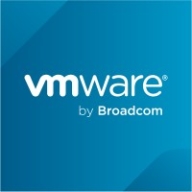

VMware Carbon Black Endpoint and Microsoft Defender XDR are two leading endpoint security solutions. Based on user feedback, VMware appears to have an edge in threat detection and response, while Microsoft integrates better with other Microsoft products for a seamless experience.
Features: VMware Carbon Black Endpoint offers advanced threat hunting capabilities, robust threat visibility, and comprehensive response tools. Microsoft Defender XDR is valued for its integration with Microsoft's broader suite, effective threat detection, and user-friendly interface.
Room for Improvement: VMware Carbon Black Endpoint could enhance its remediation process, improve user interface responsiveness, and provide better threat reporting tools. Microsoft Defender XDR could benefit from faster threat detection, more advanced remediation capabilities, and reduced false positives.
Ease of Deployment and Customer Service: VMware Carbon Black Endpoint is noted for its straightforward deployment and responsive customer service. Microsoft Defender XDR also has an easy deployment process but receives mixed reviews on customer service responsiveness.
Pricing and ROI: VMware Carbon Black Endpoint users feel the product is slightly more expensive but delivers good ROI. Microsoft Defender XDR is seen as competitively priced with an acceptable ROI.
We can quarantine and isolate a device within minutes.
Microsoft Defender XDR has saved me at least 50% of my time.
Ever since we turned on the M5 feature set back in June, we have seen a reduced number of potentially malicious clicks and faster alerting when incidents occur.
You get stuck in low-level support for way longer than you should, instead of them escalating the issue up the chain.
It's critical to escalate SEV B issues immediately to a domestic engineer.
Once issues are escalated to the second or third layer, the support is much better.
Microsoft Defender XDR shows tremendous scalability, much more so than on-premises solutions.
Microsoft Defender XDR scales pretty well.
It is suitable for enterprise-level deployment but has room for improvement.
The service has remained consistently online, with any issues isolated to specific components, suggesting a well-designed and modular architecture.
The services within our ecosystem have been reliable, meeting their SLAs.
It provides high-fidelity signals.
The licensing process needs improvement and clarification.
Improvements are needed in automated response capabilities.
Some inconsistencies exist between blades, which could be improved for a more seamless user and UI experience.
There are certainly savings when using Microsoft Defender XDR, which can range from 30%, 40%, and even up to 50%.
I would rate the pricing as eight out of ten, indicating it is a reasonable cost for the product.
Microsoft purposefully obfuscates this through marketing ploys to hide costs.
With Microsoft threat intelligence information, it detects various types of threats, including insider attacks, malicious content, and data exfiltration.
This allows us to secure our systems in advance and proactively improve security, rather than waiting for incidents to occur.
Once we have it on the security dashboard, we can see a real-time storyline.
| Product | Market Share (%) |
|---|---|
| Microsoft Defender XDR | 2.9% |
| VMware Carbon Black Endpoint | 1.8% |
| Other | 95.3% |


| Company Size | Count |
|---|---|
| Small Business | 46 |
| Midsize Enterprise | 23 |
| Large Enterprise | 37 |
| Company Size | Count |
|---|---|
| Small Business | 31 |
| Midsize Enterprise | 9 |
| Large Enterprise | 30 |
Microsoft Defender XDR is a comprehensive security solution designed to protect against threats in the Microsoft 365 environment.
It offers robust security measures, comprehensive threat detection capabilities, and an efficient incident response system. With seamless integration with other Microsoft products and a user-friendly interface, it simplifies security management tasks.
Users have found it effective in detecting and preventing various types of attacks, such as phishing attempts, malware infections, and data breaches.
Watch the Microsoft demo video here: Microsoft Defender XDR demo video.
VMware Carbon Black Endpoint enhances endpoint security with its robust EDR, threat detection, and live response features. The cloud-based architecture supports remote management and easy setup while behavioral monitoring and dynamic grouping minimize security risks.
VMware Carbon Black Endpoint is designed for those seeking comprehensive endpoint protection. With its cloud-based deployment, organizations experience streamlined remote control and simplified rollout processes. Its behavioral monitoring, incident response capabilities, and firewall integration deliver advanced security measures. Although it addresses many security challenges, areas like manual alert management, on-demand scanning, and integration with systems like AlienVault USM require refinement. Improved UI, EDR components, and flexible pricing models would enhance user satisfaction. On-premise deployment infrastructure and compatibility issues with some operating systems need attention. Enhanced reporting, container security, and multi-tenancy support are also essential for fulfilling industry needs. AI-driven analysis and threat isolation empower companies by fostering proactive management.
What are the key features of VMware Carbon Black Endpoint?
What benefits should users look for when evaluating VMware Carbon Black Endpoint?
VMware Carbon Black Endpoint finds extensive application in industries focused on stringent security requirements. Managed security service providers leverage its capabilities to deliver comprehensive protection to multiple clients worldwide. Organizations use it primarily for antivirus protection and incident management, integrating it with their existing security frameworks to strengthen endpoint visibility and real-time threat prevention. Its advanced detection and application control features make it a preferred choice in industries that prioritize robust security measures. However, it requires improvements in terms of system compatibility and customization flexibility to better serve diverse industry environments.
We monitor all Endpoint Detection and Response (EDR) reviews to prevent fraudulent reviews and keep review quality high. We do not post reviews by company employees or direct competitors. We validate each review for authenticity via cross-reference with LinkedIn, and personal follow-up with the reviewer when necessary.